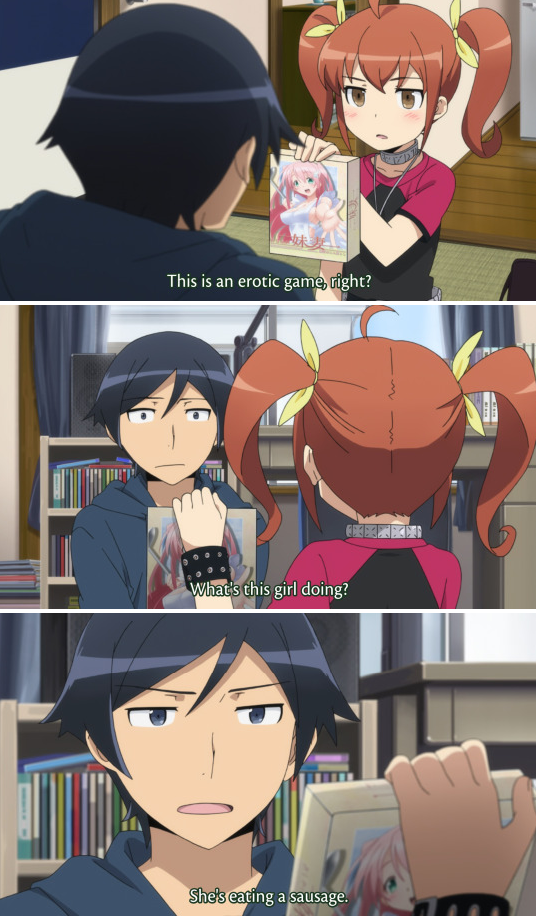Is Moe Problematic? | Understanding Why Young Girls Are
For those who are more interested in watching something rather than reading it, I’ve made a video version of my lengthy article available just above. For those who would still rather read, I’ve provided the script to my video below.
For pretty much all of my teenage and young adult life, I have been very interested in anime and, as a result, Japanese culture. I've spent hundreds if not thousands of hours consumer Japanese media, taking college course on cinema and even language. Hell, I even studied abroad for a small period of time in the country.
Okay, so now that I've proudly proclaimed how much of an American weeaboo I am, what now? Well, something I've always noticed that I've slowly become more and more perturbed by is the overt sexualization of young women in media. With this sexualization comes a certain degree of misogyny more often than not.
I wanted to understand why that was, and why it's something that has seemingly been gaining more traction and isn't going away. And while I'm going to primarily discuss anime, know that this extends into all other forms of media like video games and manga.
Yes, this is going to be a topic that sure to offend a lot of people, and so I will preface this by saying that as I speak I am not trying to make a blanket statement on any and all anime fans who happen to enjoy shows that contain these elements. I simply want to parse out the root origin of this phenomenon and try to make sense of what makes it popular.
So, let's discuss.
Historically across most of the world, patriarchy has ruled for the majority of the time humans have spent existing on this Earth. Japan of course has been no exception. For a long period of time (from the 1600s to 1800s) were treated pretty unfairly compared to men. They were dicatated on most aspects of their life (ranging from marriage to careers), as is typically in a patriarchy. It wasn't until the early 1900s that feminist movements began to rise and reshape women's role in society.
With this turn, women have begun to gain more independence and have slowly strayed away from typical Japanese ideals. Women are more than ever now acquiring higher levels of education, starting their own careers, and living an unmarried life.
As the century turned and we're now two decades in, feminism has been progressing, but at glacial progress. While woman have better equality than they did at the start of 1900s, they still remain victims of sexual harassment, discrimination, and unfair treatment in the workplace.
On the other side of the coin, Japanese men have also become victims of the societal pressures that the country places on its youth. The 90's in Japan, often called "The Lost Decade", was a period of economic stagnation which resulted from Japan's big economic boom in the 80's that brought unrealistic real estate and stock market valuations. As the markets crashed to record lows, Japanese firms consolidated and the economy slowed to a snail's pace.
When this happened, many young graduating students were unable to find sustainable jobs. Because of the immense societal pressure these men had placed on them to find success in the workplace, when they failed they were shamed. A lot of these men resided to themselves, feeling unconfident and incapable of finding a romantic partner because of this lack of financial security.
Enter the late 90s, and with it the rise of an internet board known as 2channel. A Japanese forum, 2channel gained huge popularity towards the end of the century where it grew to have as much influence in society as television and other forms of media did.
On one of the many boards on the site, there grew a rise in young men posting anonymously about young girls in anime, manga and games. These men began to refer to these girls with the term moe, coming from the word moeru which can either mean "to bud/sprout" or "to burn with passion" depending on the kanji and context.
While the term "moe" is most commonly referred to as the object of affection (young girls) nowadays, it is most accurate to describe the term in the same vein as the word "umami". Moe, like umami, is more like an affect or sensation that results from experiencing said object of affection. In reality, one could feel moe for not just young girls, but other forms as well.
It was here this amalgamation of an economic stagnation, the internet, and a failing in societal expectations where moe surged, including its most common byproduct - hand-drawn young girls.
Fast-forward to the latter half of the 2000s and the 2010s, and Japanese men more than ever are forgoing a physical romantic partner. A study conducted in 2017 found that 60% of men aged 25-35 were unmarried, and half of men in their 20s had never been in any form of romantic relationship. When asked why, many simply said "it's too much of a hassle".
Yes, the Japanese are increasingly growing less focused on the pursuit of a romantic partner or companionship in general. Take for example the rise in an activity referred in Japan as ohitorisama, "on your own". As the name implies, more and more people are finding enjoyment in indulging in what once were social activities by themselves, such as karaoke. In a society that has long since been dictated on following societal norms and meeting certain expectations, people are using ohitorisama as a way to escape their everyday pressures in life and relax.
Moe subculture is systemic and, in my opinion, congruent with the rise in men no longer pursuing physical relationships with other humans. In the book The Moe Manifesto by Patrick W. Galbraith, the author interviews various prominent creators and voices in the subculture to get their perspective. When asked what might draw someone to enjoying young girls in media, they believe it is because of their vulnerability and innocence, which creates a desire to protect these characters.
Honda Toru, a famous athour and cultural critic in Japan, was interviewed by Galbraith in his book. When asked why he believes moe characters tend to be young, Honda states:
““Because that makes them vulnerable which inspires us to protect and nurture them. The character needs support, love, or care, even if she is strong and independent. If she is not at all vulnerable, then she can live on her own. It would be hard to approach such a perfect being. Being vulnerable means that you need others, and these characters can’t survive without support.””
He also states that:
““After the Second World War, the value of men in japan was determined by their productivity at work. The man who earned money was able to spend it, showing that he was a worthy mate. This then became the only way to be a man, the only way to be favorably appraised by women. I call this the era of love capitalism, meaning that dating and courtship were increasingly tied to consumption.””
However, I believe there's more to it than that. I believe that for more than a handful of these men, moe is a guard. A guard in which they can play the typical masculine role as protector while being able to enjoy the cute characters which they perceive as femininity. Moe, for the intents and purposes of this instance, is a thin veil which ultimately perpetuates toxic masculinity.
It also creates a major subsector where men can "play the protector" for these young girls as well court them into relationships. There are then, of course those in the subculture that wildly perverse these girls. The thing is though, for producers of this market, it's not even necessarily about generating a profit.
Morinaga Takuro, an economist who has spent a lot of time studying the moe market, had this to say about it:
““The producers and the consumers tend to be the same people… The result is what I call the Akihabara block economy. The money circulates around from place to place within a narrow closed market, and no one actually makes a profit… Why would anyone produce things if they aren’t making money? The answer is love. The producers are otaku and they want to produce for other otaku who appreciate their work. They are pursuing what they love.””
That's not to say all of the market is in the red. To give you an example of how popular the subculture is as a whole, one of the top media franchises in Japan for the past several years has been Love Live!, a series which follows several schoolgirls as they try to start an idol group. In just three years (2015 to 2018), that series alone has generated over 200 million dollars in revenue (which was just Japan, not including revenue from other countries).
Look. As I said before, I'm not trying to outright blanketly state that the moe subculture as a whole is awful and needs to end immediately. It isn't just men who enjoy this, but women as well. And not all men who enjoy it are sexualizing it.
However, I believe that moe firmly has its roots seeded beneath a series of complex and regressive societal issues ranging from toxic masculinity to pressure to meet ideals to women being treated unequally and facing sexual harassment from men. Trying to prevent the sexualization of young girls in Japanese media isn't going to end if we decide to ban children from being featured in these properties. It'll be a bandaid that will just get torn and tossed.
No, to curb it is to actually try and fix the deeply rooted issues, instead of shuffling around it like it's not even more important. And it's only then that we would ever have any feasible chance of things progressing.




